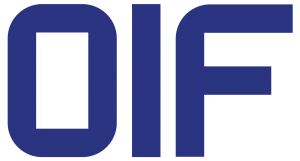Ethernet speed tuning goal of OIF FlexEthernet project
Author Stephen Hardy,
Editorial Director and Associate Publisher, Lightwave
February 12, 2015
Optical Internetworking Forum (OIF) members decided last month at their first quarter 2015 meeting to launch a project that would enable systems designers and their customers to tune the transmission speeds of their Ethernet equipment to rates not specified in existing Ethernet standards.
The FlexEthernet project will build on the OIF’s previous development of the multi-link gearbox (MLG), a device that mitigates differences in the number of lanes between chip interfaces. For example, the MLG can translate between a chip that sends a 100-Gbps signal across 10 lanes of 10 Gbps and another that operates at 4×25 Gbps and allow the signal to be recovered in its original 10-lane form (see “OIF launches new interconnect, 100G projects” and “AppliedMicro demos OIF-compliant 100G/10G multi-link gearbox chip”). The new project will create ways of using channelization, bonding, and sub-rate functionality to enable data rates to be adjusted either above or below current Ethernet standards.
The effort responds to requests from data center operators for a way to maximize the capacity of existing network infrastructures, according to Nathan Tracy of TE Connectivity and the OIF’s Technical Committee chair. For example, if a particular link couldn’t support a 40 Gigabit Ethernet connection due to reach or interference factors, FlexEthernet would enable the user to reduce the transmission rate to the highest the link would support without having to drop all the way to 10 Gigabit Ethernet, Tracy said. Conversely, if an operator wanted to transmit at a higher rate than 100 Gigabit Ethernet, FlexEthernet would enable that as well.
Transmission rates of 200 Gbps would be possible today if the FlexEthernet project were complete, Tracy added.
However, it’s not complete – and, as is customary among OIF spokesmen, Tracy declined to predict when the FlexEthernet development project would finish.
In other action at the quarterly meeting, the OIF membership moved closer to approving its SDN Framework document and finishing development of implementation agreements for software-defined networking (SDN) APIs addressing topology, service request, connection request, and path computation (see “OIF to explore Transport SDN, CFP2” and “OIF looks to solidify Transport SDN APIs”). The Physical and Link Layer Working group also met to discuss the application of PAM-4 and NRZ modulation formats for various CEI-56G projects.
The groups will meet again in April.

